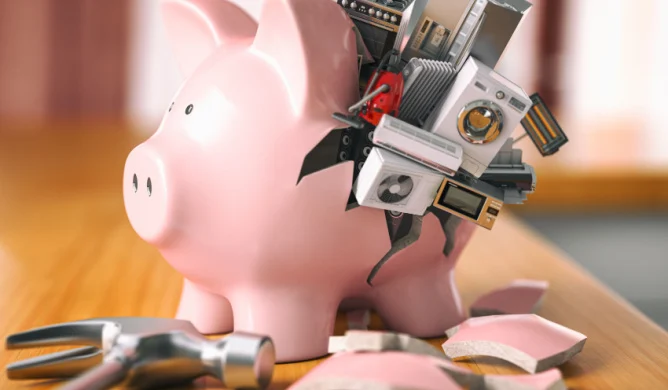Time to read : 3 Minutes
Understanding Appliance Efficiency Ratings
You need to understand the Australian star rating system in order to understand the efficiency of your household appliances.
The stars displayed on the Energy Rating Label rank how much energy a product uses, compared to similarly sized products, with similar features.
The more stars a product has, the more efficient it is to run. So, the more stars there are, the more money you can save on your energy bills.
In the past, it was rare to see more than 6 stars on a label but as technology advances, and sustainability and cost-saving efficiency is prioritised, some super-efficient products feature 10 stars.
How do you find the energy efficient appliance that's right for you?
Start with the features and size you need – then look to the stars.
The star rating factors the size and features of each appliance it ranks, so you need to choose relevant size and desirable features first, then compare the rating labels.
But how does the price difference vary with energy ratings?
Using an Electrolux (model EWW1042R7WB) 10kg washing machine as an example, this 5-star rated front-loading machine has been assessed as having a 10-year running cost of $562.96 (based on seven cold water washes per week, at a tariff rate of 24.8c/kWh).
Compare it to a 10kg top-loading Whirlpool (model WB10037) at the same tariff, also based on seven washes per week but with a dual water connection, and the 10-year running cost for this 1.5-star rated machine is $2430.40.
Measuring energy consumption
Energy consumption is how much electricity a specific model uses, using the kilowatt hours (kWh) measurement. Standardised testing is required by law, in line with Australian and New Zealand Standards.
The tests are based on the way most people use their appliance. You may use your appliance differently, so that means the label may not accurately represent how much energy your appliance uses.
The energy consumption number can be used to compare any model, no matter what size it is or what features it has. If an appliance has low energy consumption, it will save you money.
To help you budget for your energy bill, use the following formula:
Annual running cost = Total energy consumption (kWh) × Electricity tariff (dollars per kWh)
The formula gives you a basic insight into running costs but, if you really want to save as much as possible you can make further adjustments that can help reduce your costs.
For example, if you only use cold water for your washing machine, the biggest electricity demand is the energy required to spin the drum.
All the other electrical components (pumps, valves and digital control panels) only use a small amount of energy. Hot water washing is more expensive, with water heating accounting for as much as 90% of the total energy use required in a hot water washing cycle.
Shop around and save
Making sense of appliance efficiency ratings is a good way to help you choose the most efficient appliance to suit your needs, but there are other steps you can take to reduce your power bill.
To help you understand how to get a better deal, it’s important to be clear about the deal you already have. Start by checking the service calculation section of your electricity bill to find your electricity tariff. For more information about tariffs, visit the Australian Energy Regulator website.
And if you want to explore your options to see if you can save more money on your electricity bill, simply contact your energy provider and tell them. If they say they can’t help, shop around and compare. Go with the provider you believe can meet your needs and budget.
The bottom line
If you own your home and are looking for savings beyond which appliance has the best efficiency rating, consider switching from gas to electricity. Be sure to crunch the numbers first.
With energy bills rising, there are ways to save, including solar.
Transitioning to new appliances and new forms of energy can be costly to start but if you are looking for long-term savings, the numbers can stack up in your favour over time.
Go deeper: How to reduce energy costs of running a washing machine
Financial disclaimer
The information contained on this web page is of general nature only and has been prepared without taking into consideration your objectives, needs and financial situation. You should check with a financial professional before making any decisions. Any opinions expressed within an article are those of the author and do not specifically reflect the views of Compare Club Australia Pty Ltd.
